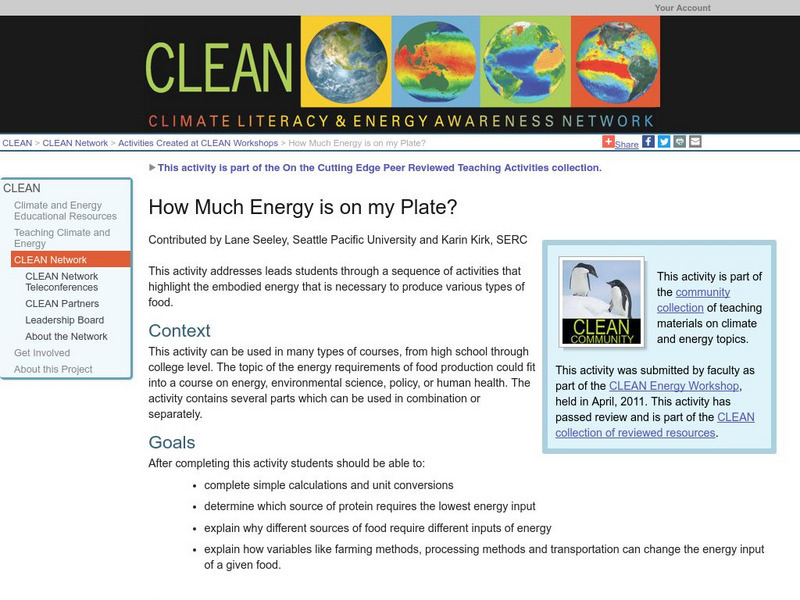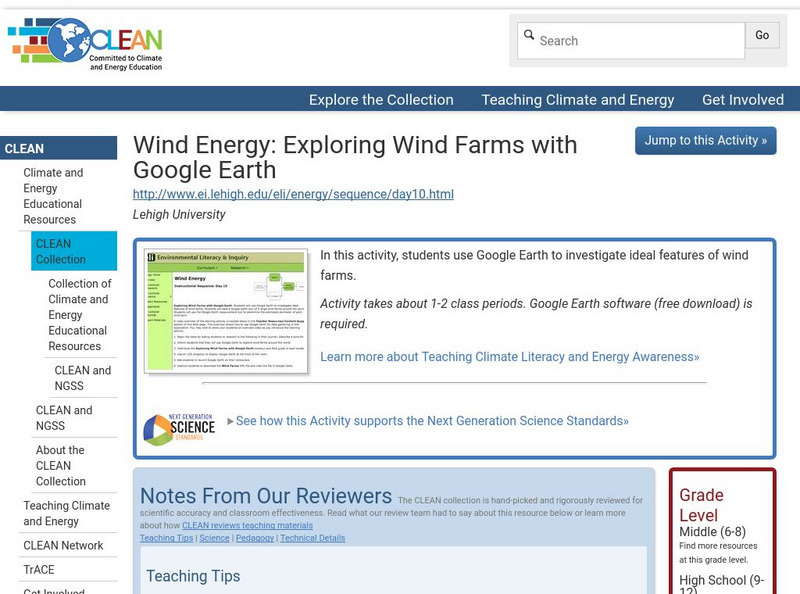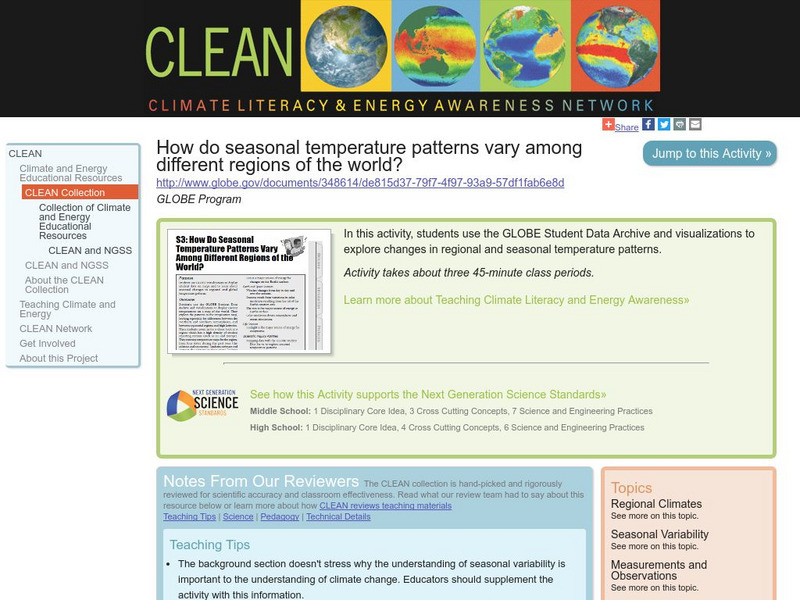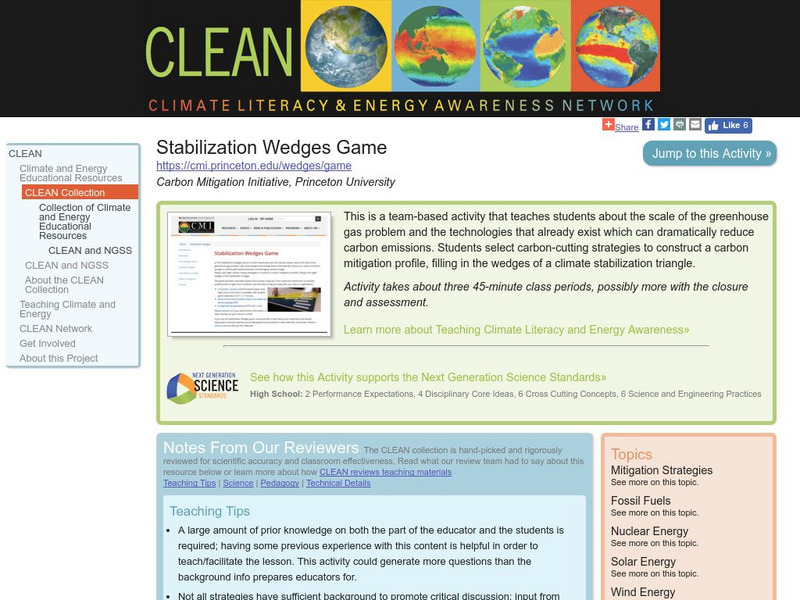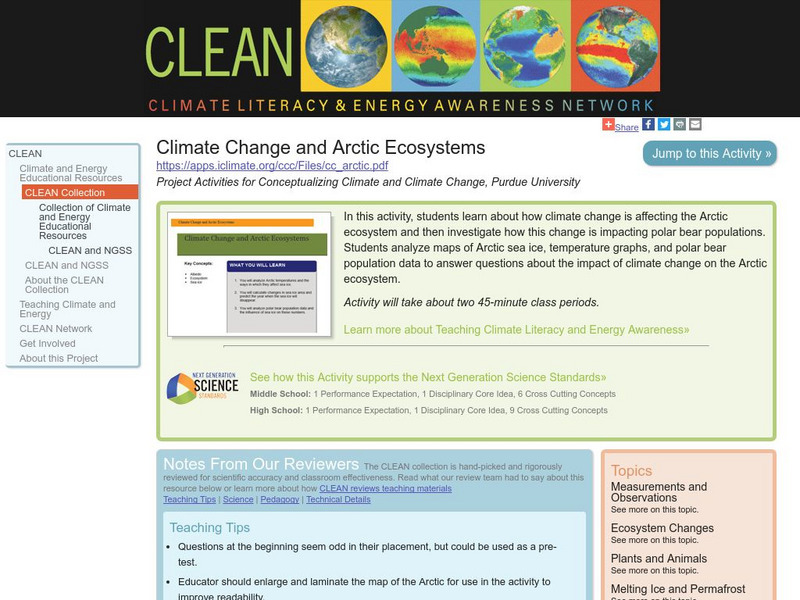Climate Literacy
Clean: Getting to the Core of Climate Change
Students investigate climate changes going back thousands of years by graphing and analyzing ice core data from Greenland and Antarctica. They use information about natural and human-caused changes in the atmosphere to formulate...
Climate Literacy
Clean: How Much Energy Is on My Plate?
Using concept sketches, students study energy requirements of food production explain why different sources of food require different inputs of energy. They also investigate how variables like farming methods, processing methods and...
Climate Literacy
Clean: Wind Energy Using Google Earth
In this activity students will use Google Earth to investigate ideal features of wind farms and they will use the Google Earth measurement tool to determine the estimated perimeter of each wind farm.
Climate Literacy
Clean: Carbon Cycle Game
In this interactive, regionally-relevant carbon cycle game, learners are challenged to understand the role of carbon in global climate change. They imagine that they are carbon molecules and travel via different processes through carbon...
Climate Literacy
Clean: Ecological Footprint
Students explore their own ecological footprint in the context of how many Earths it would take if everyone used the same amount of resources they did. They compare this to the ecological footprint of individuals in other parts of the...
Climate Literacy
Clean: Seasonal Temperature Pattern Variation in Different Regions of the World
Students use GLOBE climate science visualizations to display student data on maps and to learn about seasonal changes in regional and global temperature patterns.
Climate Literacy
Clean: Climate Change on the Antarctic Peninsula
In this cross-curriculum inquiry, students use a cooperative approach to investigate the effect of climate change on the ecosystem of the Antarctic Peninsula. The activity stresses the importance of evidence in the formulation of...
Climate Literacy
Clean: Stabilization Wedges Game
A team-based exercise that teaches players about the scope of the greenhouse gas problem, plus technologies that already exist to dramatically reduce our carbon emissions and help steer Earth away from climate change.
Climate Literacy
Clean: Coral Bleaching: A White Hot Problem
Students investigate coral bleaching using water temperature data from the NOAA National Data Buoy Center. Then they learn about the habitat of corals, the stresses on coral populations, and the impact of increased sea surface...
Climate Literacy
Clean: Climate Change and Arctic Ecosystems
Students learn about how climate change is affecting the Arctic ecosystem, and then investigate how this change is impacting polar bear populations. Students analyze maps of Arctic sea ice, temperature graphs, and polar bear population...
Climate Literacy
Clean: Climate Change and Ecosystems
Students research the inter-dependencies among plants and animals in an ecosystem and explore how climate change affects those relationships and the ecosystem as a whole.
Climate Literacy
Clean: Person on the Street (Pos) Interview About Climate Science
A media project where students create a video that documents unrehearsed interviews with "people on the street" about a specific question or issue in climate science.
Climate Literacy
Clean: Impacts of Topography on Sea Level Change
Students use web-based animations to explore the impacts of ice melt, specifically changes to sea level. They also use topographic maps to examine the relationship between topography and sea level change by mapping changing shorelines.
Climate Literacy
Clean: Greenhouse Gas in a Bottle Demonstration
A simple demonstration that is quick and easy to setup and provides dramatic evidence of the effect on temperature of an atmosphere with increased carbon dioxide. [4 min]

